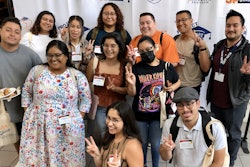TUCSON, Ariz.
Eat it to save it. It may seem counterintuitive to eat species hovering on the cusp of extinction, and frankly, no one wants you to put a polar bear in the slow cooker.
But “food-ethics consciousness” — the concept of rescuing traditional foods from obscurity by creating a market for them — is the new thing, now that more consumers have resolved the paper versus plastic issue with canvas bags, embraced organics and focused on “buying local” to reduce carbon footprints.
Fewer than 30 plants now provide 90 percent of the world’s nutrition, a fact that places thousands of heritage food species at risk of extinction, says Gary Nabhan, a Tucson ethnobotanist and author whose book Renewing America’s Food Traditions: Saving and Savoring the Continent’s Most Endangered Foods, Chelsea Green Publishing (May 2008) is the new bible for what is known as “eater-based conservation.” Nabhan recently accepted a tenured professorship as a research social scientist at the Southwest Center of the University of Arizona, his alma mater.
No longer is the Carolina northern flying squirrel a standard ingredient in regional fire-thickened stews. American chestnuts have been devastated, and good luck finding stands of paw-paw patches, a wild fruit often likened to mangoes or pears.
So Nabhan and collaborating partners from seven conservation groups spent four years devising an inventory of nearly 1,100 food species unique to 13 food regions in North America that are threatened, endangered or, in some cases, gone from our marketplaces.















